Marine Electrical Systems: A Comprehensive Guide for Boat Owners
 Your boat's electrical system is the lifeline that powers everything from essential navigation equipment to comfort amenities that make your time on the water more enjoyable. Unlike home electrical systems, marine electrical systems face unique challenges: exposure to moisture, vibration, corrosion, and limited space. Understanding how these systems work, how to maintain them properly, and how to troubleshoot common issues is essential knowledge for every boat owner. This comprehensive guide will walk you through the fundamentals of marine electrical systems, maintenance best practices, troubleshooting techniques, and upgrade options to enhance your vessel's electrical capabilities.
Your boat's electrical system is the lifeline that powers everything from essential navigation equipment to comfort amenities that make your time on the water more enjoyable. Unlike home electrical systems, marine electrical systems face unique challenges: exposure to moisture, vibration, corrosion, and limited space. Understanding how these systems work, how to maintain them properly, and how to troubleshoot common issues is essential knowledge for every boat owner. This comprehensive guide will walk you through the fundamentals of marine electrical systems, maintenance best practices, troubleshooting techniques, and upgrade options to enhance your vessel's electrical capabilities.
Understanding Marine Electrical Systems
Before diving into maintenance and troubleshooting, it's important to understand the basic components and principles of marine electrical systems:
Basic Components of Marine Electrical Systems
Power Sources
- Batteries: Store electrical energy for use when the engine is off or as backup
- Alternators: Generate electricity while the engine is running to power systems and recharge batteries
- Shore Power: External AC power source when docked at marinas
- Generators: Produce AC power when away from shore power
- Solar Panels: Provide supplemental DC power from solar energy
- Wind Generators: Convert wind energy to electrical power
Distribution Systems
- Main Distribution Panel: Central hub for circuit breakers and switches
- Circuit Breakers: Protect circuits from overload
- Fuses: Sacrificial protection devices for circuits
- Bus Bars: Connection points for multiple circuits
- Wiring Harnesses: Organized bundles of wires
- Battery Switches: Control which batteries are in use
Conversion and Regulation Devices
- Battery Chargers: Convert AC power to DC for battery charging
- Inverters: Convert DC battery power to AC for powering household appliances
- Inverter/Chargers: Combination units that perform both functions
- Voltage Regulators: Maintain consistent voltage from alternators
- Isolators and Combiners: Manage charging and load sharing between multiple batteries
Consumers (Loads)
- Navigation Equipment: GPS, chartplotter, radar, VHF radio
- Lighting: Interior, exterior, navigation lights
- Pumps: Bilge, freshwater, livewell
- Entertainment Systems: Stereo, TV, speakers
- Refrigeration: Refrigerators, freezers, ice makers
- Climate Control: Heaters, air conditioning
- Windlass and Thrusters: High-current devices for anchoring and maneuvering
DC vs. AC Systems
Most boats have both DC (Direct Current) and AC (Alternating Current) electrical systems, each serving different purposes:
DC Systems (Typically 12V or 24V)
- Powered by batteries and charging sources
- Run essential equipment like navigation lights, electronics, pumps
- Always available when batteries are charged
- Lower voltage means thicker wires for high-current applications
- Typically use two-wire circuits (positive and negative)
- Primary system on smaller boats
AC Systems (Typically 120V or 240V)
- Powered by shore power, generators, or inverters
- Run high-power devices like air conditioning, water heaters, large appliances
- Only available with shore power, generator, or sufficient inverter capacity
- Higher voltage allows for smaller wires
- Requires special safety considerations (GFCI protection, isolation)
- More common on larger vessels
Marine-Specific Requirements
Marine electrical systems have unique requirements compared to automotive or residential systems:
- Corrosion Resistance: All components must withstand the marine environment
- Vibration Tolerance: Components must withstand constant movement and engine vibration
- Water Resistance: Systems must be protected from moisture and spray
- Ignition Protection: Components in engine spaces must be ignition protected to prevent explosion
- Wire Sizing: Marine wiring is typically sized larger than residential equivalents
- Tinned Copper: Marine-grade wiring uses tinned copper for corrosion resistance
- Strain Relief: All connections must be secured against movement
- Circuit Protection: Every circuit requires proper fusing or circuit breakers
For marine-grade electrical components, check our marine electrical collection.

Marine Battery Systems
Batteries are the heart of your boat's electrical system. Understanding battery types, configurations, and maintenance is crucial:
Battery Types for Marine Use
Flooded Lead Acid
- Advantages: Lowest initial cost, widely available, tolerant of overcharging
- Disadvantages: Require regular watering, must remain upright, produce gas when charging, shorter lifespan
- Best for: Starting applications, budget installations
AGM (Absorbed Glass Mat)
- Advantages: Maintenance-free, spill-proof, higher discharge rates, longer lifespan, faster charging
- Disadvantages: Higher cost, sensitive to overcharging, heavier than flooded
- Best for: Deep cycle applications, vessels with limited maintenance access
Gel Cell
- Advantages: Maintenance-free, excellent deep cycle performance, resistant to vibration
- Disadvantages: Require specific charging profiles, sensitive to overcharging, limited availability
- Best for: Applications with extreme deep cycling needs
Lithium Iron Phosphate (LiFePO4)
- Advantages: Lightweight, extremely long cycle life, fast charging, high discharge rates, nearly full capacity available
- Disadvantages: Very high initial cost, require battery management systems, temperature sensitive
- Best for: Weight-sensitive applications, vessels requiring maximum capacity in limited space
Battery Configurations
Single Battery System
- Simplest configuration
- One battery serves both starting and house loads
- Typically used on smaller boats with minimal electrical needs
- Risk of being stranded if battery depletes
Dual Battery System
- Separate starting and house batteries
- Battery switch allows isolation or combining of batteries
- Provides redundancy for starting
- Common on mid-sized recreational boats
Multiple Battery Bank System
- Separate starting battery(s) and house bank
- House bank may consist of multiple batteries in parallel
- Often includes dedicated batteries for specific systems (thrusters, windlass)
- Requires charge management systems
- Common on larger vessels with extensive electrical demands
Battery Maintenance
Proper battery maintenance is essential for reliability and longevity:
Regular Inspection
- Check terminals for corrosion
- Ensure secure mounting
- Verify cable connections are tight
- Check electrolyte levels in flooded batteries
- Clean battery tops to prevent parasitic drain
Charging Practices
- Use multi-stage marine chargers appropriate for battery type
- Avoid deep discharges when possible
- Maintain proper voltage during storage
- Consider temperature compensation for charging
- Equalize flooded batteries periodically (if recommended)
Testing and Monitoring
- Measure specific gravity in flooded cells
- Perform load testing annually
- Monitor voltage under load
- Consider installing battery monitors
- Track battery age and performance
For quality marine batteries and charging equipment, explore our marine battery and charger collection.
Wiring and Circuit Protection
Proper wiring and circuit protection are critical for safety and reliability:
Marine-Grade Wiring
Marine wiring differs from automotive or residential wiring in several important ways:
- Tinned Copper: Marine wire uses tinned copper strands to resist corrosion
- Stranding: More and finer strands for flexibility and vibration resistance
- Insulation: Special moisture and UV-resistant insulation
- Sizing: Typically sized larger than minimum requirements to account for voltage drop
- Color Coding: Follows ABYC (American Boat and Yacht Council) standards
Wire Sizing Considerations
- Current carrying capacity (ampacity)
- Voltage drop over distance (3% maximum recommended)
- Circuit protection device rating
- Installation environment (engine room wiring may need larger sizing)
- Future expansion needs
Circuit Protection
Every circuit in a marine electrical system requires proper protection:
Fuses
- Sacrificial devices that melt when current exceeds rating
- Types include AGC (glass), ATC (automotive), ANL, MEGA, and Class T
- Must be rated for DC or AC use as appropriate
- Should be sized to protect the wire, not the device
- Must be accessible for replacement
Circuit Breakers
- Resettable protection devices
- Available in toggle, push-button, or thermal designs
- Must be rated for marine use
- Should be mounted in accessible locations
- Available in different trip curves for various applications
Main Disconnects
- Battery switches provide overall system isolation
- Should be rated for maximum possible current
- Must be accessible but protected from accidental operation
- Often include positions for individual batteries or combined operation
Connections and Terminals
Proper connections are critical in the marine environment:
- Crimped Connections: Use proper marine-grade terminals with adhesive-lined heat shrink
- Terminal Blocks: Use barrier-type blocks with insulating covers
- Bus Bars: Provide common connection points for multiple circuits
- Waterproof Connectors: Essential for exposed locations
- Strain Relief: All connections should have proper strain relief

Charging Systems
Reliable charging systems are essential for maintaining battery capacity:
Engine Alternators
The primary charging source while underway:
- Standard Alternators: Factory-installed units typically 40-90 amps
- High-Output Alternators: Aftermarket units up to 200+ amps
- Serpentine Belt Systems: Provide more reliable power transfer
- External Regulators: Allow multi-stage charging profiles
- Dual Alternator Setups: Separate charging for starting and house banks
Alternator Maintenance
- Check belt tension and condition regularly
- Ensure proper ventilation for cooling
- Verify secure mounting
- Test output voltage and current periodically
- Keep electrical connections clean and tight
Shore Power Charging
Primary charging source when docked:
Battery Chargers
- Multi-Stage Chargers: Provide bulk, absorption, and float charging phases
- Multi-Bank Chargers: Charge multiple battery banks independently
- Smart Chargers: Adjust to battery type and condition
- Temperature Compensation: Adjusts charging based on battery temperature
- Remote Monitoring: Advanced units offer remote status checking
Shore Power Safety
- Use marine-grade shore power cords
- Install galvanic isolators to prevent corrosion
- Use isolation transformers for complete electrical isolation
- Verify polarity before connecting
- Install ELCI (Equipment Leakage Circuit Interrupter) protection
Alternative Charging Sources
Solar Panels
- Provide silent, maintenance-free charging
- Available in rigid or flexible formats
- Require charge controllers for proper battery charging
- Output varies with sunlight conditions
- Can maintain batteries during storage periods
Wind Generators
- Effective in windy anchorages
- Complement solar in cloudy/nighttime conditions
- Require secure mounting and proper regulation
- Consider noise and vibration factors
Generators
- Provide AC power for large loads and battery charging
- Require regular maintenance
- Need proper ventilation and cooling
- Available in various sizes from 2kW to 20+kW
- Consider sound shielding for comfort
Hydrogeneration
- Generate power from water flow while sailing
- Typically shaft or propeller-driven systems
- Create drag when in use
- Most effective at higher speeds
Electrical System Maintenance
Regular maintenance prevents failures and extends system life:
Routine Inspections
Perform these checks regularly:
- Battery Connections: Check for corrosion, tightness, and proper coverage
- Wiring: Inspect for chafing, heat damage, or loose connections
- Corrosion: Look for green (copper) or white (aluminum) corrosion at connections
- Water Intrusion: Check for signs of water in electrical panels or junction boxes
- Circuit Protection: Verify all fuses and breakers are proper rating and condition
- Charging Systems: Test output voltage and current
- Bonding System: Check continuity of bonding wires and connections
Preventative Maintenance
These regular tasks prevent problems:
- Clean Battery Terminals: Remove corrosion with baking soda solution
- Apply Terminal Protection: Use anti-corrosion spray or grease
- Tighten Connections: Check and tighten all electrical connections
- Test GFCI Outlets: Verify proper operation monthly
- Exercise Circuit Breakers: Toggle occasionally to prevent seizing
- Check Battery Water Levels: For flooded batteries, maintain proper levels
- Measure Voltage Drop: Test critical circuits under load
- Clean Electrical Panels: Remove dust and moisture
Seasonal Maintenance
Spring Commissioning
- Reconnect batteries and check charge state
- Test all systems before leaving dock
- Verify shore power connections and operation
- Check navigation lights
- Test all pumps and motors
- Inspect for winter damage to wiring
Fall Winterization
- Clean and protect battery terminals
- Consider removing batteries for off-season charging
- If leaving batteries aboard, maintain charge with solar or periodic charging
- Turn off all circuits not needed during storage
- Consider moisture control in electrical panels

Troubleshooting Marine Electrical Systems
When problems arise, systematic troubleshooting helps identify the cause:
Essential Troubleshooting Tools
- Digital Multimeter: Measures voltage, resistance, and continuity
- Circuit Tester: Quickly identifies live circuits
- Battery Load Tester: Tests battery under load
- Clamp Meter: Measures current without breaking the circuit
- Wire Tracer: Identifies wires in bundles
- Infrared Thermometer: Identifies hot spots in connections
Common Problems and Solutions
Battery Not Charging
Possible causes:
- Failed alternator or regulator
- Loose or corroded connections
- Broken or loose belt
- Failed battery charger
- Tripped circuit breaker
- Battery switch in wrong position
Diagnostic steps:
- Check alternator belt tension and condition
- Measure alternator output voltage (should be 13.8-14.4V)
- Inspect all connections in charging path
- Verify battery switch position
- Check for blown fuses in charging circuit
Electrical Device Not Working
Possible causes:
- Blown fuse or tripped breaker
- Faulty device
- Poor connections
- Insufficient voltage
- Corroded switches or contacts
Diagnostic steps:
- Check fuse or circuit breaker
- Measure voltage at device (should be within 0.5V of battery voltage)
- Test device with known good power source if possible
- Check for corrosion at connections
- Verify ground connection
Dim Lights or Slow Motors
Possible causes:
- Voltage drop from undersized wiring
- Poor connections
- Low battery charge
- Corroded terminals
- Multiple loads exceeding capacity
Diagnostic steps:
- Measure voltage at battery and at device under load
- Check for warm connections indicating resistance
- Test battery state of charge
- Inspect for corrosion at all connection points
- Verify wire size is appropriate for load and distance
Corrosion Issues
Possible causes:
- Galvanic corrosion from dissimilar metals
- Stray current corrosion
- Water intrusion
- Battery acid exposure
- Salt spray exposure
Diagnostic steps:
- Identify type of corrosion (color often indicates metal type)
- Check for water sources near corrosion
- Test for stray DC voltage in water around boat
- Inspect bonding system connections
- Check for battery acid leakage
Shore Power Problems
Possible causes:
- Faulty shore power cord
- Tripped breaker at pedestal
- Reversed polarity
- GFCI or ELCI tripping
- Corroded shore power connections
Diagnostic steps:
- Check breakers at dock pedestal
- Inspect shore power cord for damage
- Test outlet with circuit tester for proper wiring
- Check for signs of overheating at connections
- Test for voltage at main panel
Systematic Troubleshooting Approach
Follow this general approach for any electrical problem:
- Define the problem: Identify exactly what isn't working and when
- Check the simple things first: Breakers, fuses, switches, connections
- Isolate the system: Determine if problem is in power source, distribution, or device
- Measure voltages: Check at source, along path, and at device
- Look for patterns: Do multiple devices fail simultaneously?
- Consider recent changes: Did problem start after new installation or repair?
- Document findings: Record measurements and observations
- Make one change at a time: Test after each modification
Electrical System Upgrades
Consider these upgrades to enhance your vessel's electrical capabilities:
Battery System Upgrades
- Capacity Expansion: Add batteries in parallel for more amp-hour capacity
- Technology Upgrade: Switch from flooded to AGM or lithium
- Battery Monitoring: Install systems that track state of charge and usage
- Smart Battery Switches: Automatic combining based on charging or load conditions
- Battery Management Systems: Required for lithium systems, provides cell balancing and protection
Charging System Improvements
- High-Output Alternators: Increase charging capacity while underway
- External Regulators: Provide multi-stage charging from alternators
- Advanced Battery Chargers: Multi-bank, temperature-compensated charging
- Solar Panel Systems: Sustainable charging while at anchor or moored
- Wind Generators: Complementary charging source for cloudy conditions
Distribution System Enhancements
- Digital Switching: Programmable control of circuits via touchscreen or remote
- Remote Monitoring: Systems that allow checking boat status from anywhere
- Improved Circuit Protection: ELCI and GFCI protection for enhanced safety
- Organized Panel Upgrades: Logical grouping of circuits with proper labeling
- Dual Bus Systems: Separate essential and non-essential loads
Power Conversion Upgrades
- Inverters: Convert DC power to AC for running household appliances
- Inverter/Chargers: Combination units that provide seamless power transition
- DC-to-DC Converters: Create stable voltage for sensitive electronics
- Isolation Transformers: Provide complete electrical isolation from shore power
- Galvanic Isolators: Prevent corrosion from shore power connections
Planning Your Upgrade
Consider these factors when planning electrical upgrades:
- Current and Future Needs: Plan for expansion beyond immediate requirements
- Space Constraints: Ensure physical space for new components
- Weight Considerations: Battery upgrades can add significant weight
- Budget Allocation: Prioritize safety and reliability over convenience
- Integration: Ensure new components work with existing systems
- Documentation: Update electrical diagrams after modifications
For electrical upgrade components, explore our marine electrical collection.

Safety Considerations
Marine electrical systems present unique safety challenges:
Electrical Safety Basics
- Always disconnect power sources before working on electrical systems
- Use insulated tools when working with live circuits (when absolutely necessary)
- Never work on AC systems without proper knowledge and tools
- Avoid wearing metal jewelry when working on electrical systems
- Keep one hand in pocket when troubleshooting to avoid across-the-heart current path
- Have fire extinguisher rated for electrical fires nearby
- Know how to quickly disconnect all power sources in an emergency
AC System Safety
- GFCI Protection: Install on all AC outlets in wet locations
- ELCI Protection: Equipment Leakage Circuit Interrupters protect entire AC system
- Polarity Indicators: Install to warn of reversed polarity in shore power
- Isolation Transformers: Provide complete electrical isolation from shore
- Proper Grounding: Follow ABYC standards for AC grounding
- Quality Shore Power Cords: Use marine-grade cords with proper sealing
DC System Safety
- Fuse All Circuits: Every positive wire should have appropriate protection
- Main Disconnects: Install battery switches in accessible locations
- Proper Wire Sizing: Use appropriately sized wire for current and distance
- Secure Batteries: Ensure batteries cannot move in rough conditions
- Terminal Protection: Cover battery terminals to prevent accidental shorts
- Ventilation: Provide adequate ventilation for battery compartments
Corrosion and Bonding
- Bonding System: Connect underwater metals to prevent galvanic corrosion
- Sacrificial Anodes: Install and maintain zinc or aluminum anodes
- Galvanic Isolators: Prevent shore-side corrosion issues
- Stray Current Protection: Monitor and prevent DC leakage into water
- Regular Inspection: Check bonding connections for integrity
Standards and Compliance
Following established standards ensures safety and reliability:
ABYC Standards
The American Boat and Yacht Council publishes comprehensive standards for marine electrical systems:
- E-1: Battery storage and installation
- E-2: Cathodic protection
- E-3: Lightning protection
- E-4: Lightning protection for boats
- E-11: AC and DC electrical systems
- A-28: Galvanic isolators
- A-31: Battery chargers and inverters
Other Relevant Standards
- NMMA Certification: Follows ABYC standards for new boats
- ISO Standards: International standards for marine electrical systems
- Coast Guard Requirements: Minimum standards for navigation lights and safety equipment
- Classification Society Rules: For larger vessels, standards from organizations like ABS or Lloyd's
Insurance Considerations
- Many insurers require compliance with ABYC standards
- Some require professional installation of major electrical components
- Documentation of electrical systems may be required for claims
- Regular surveys often include electrical system inspection
Conclusion
Your boat's electrical system is a complex network that requires understanding, maintenance, and occasional upgrades. By familiarizing yourself with the components, following proper maintenance procedures, and addressing issues promptly, you can ensure reliable operation and extend the life of your electrical system.
Remember that safety should always be the primary consideration when working with marine electrical systems. When in doubt, consult with a certified marine electrician, especially for AC system work or major modifications.
For all your marine electrical needs, including batteries, wiring, distribution components, and charging systems, explore JLM Marine's comprehensive marine electrical collection. Our quality marine-grade products are designed to provide reliable power for your boating adventures.
About JLM Marine
Founded in 2002, JLM Marine has established itself as a dedicated manufacturer of high-quality marine parts, based in China. Our commitment to excellence in manufacturing has earned us the trust of top marine brands globally.
As a direct supplier, we bypass intermediaries, which allows us to offer competitive prices without compromising on quality. This approach not only supports cost-efficiency but also ensures that our customers receive the best value directly from the source.
We are excited to expand our reach through retail channels, bringing our expertise and commitment to quality directly to boat owners and enthusiasts worldwide.

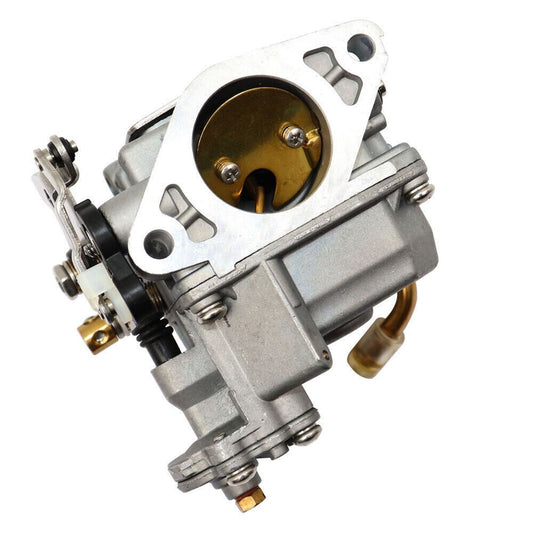
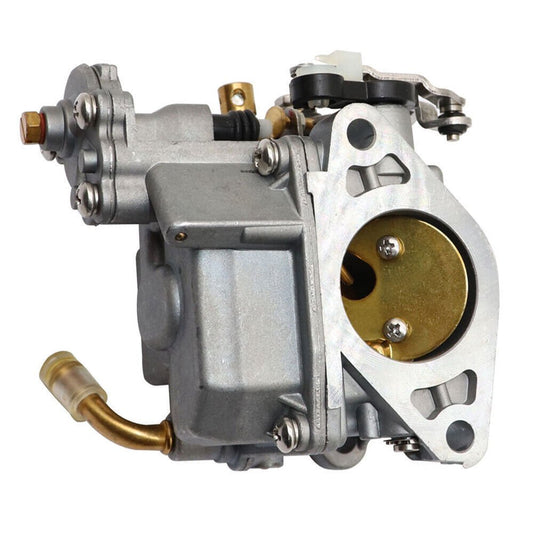
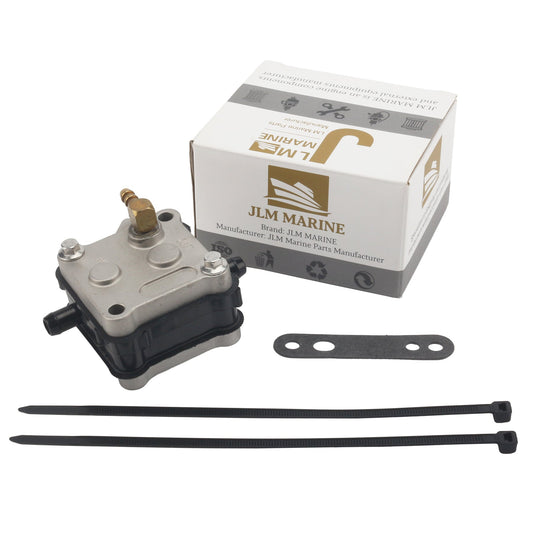
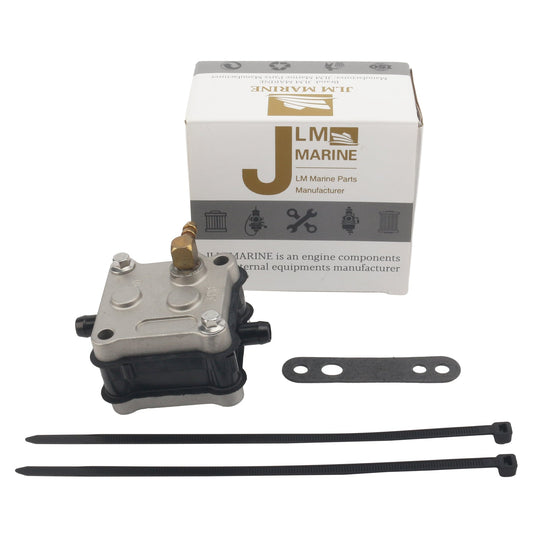
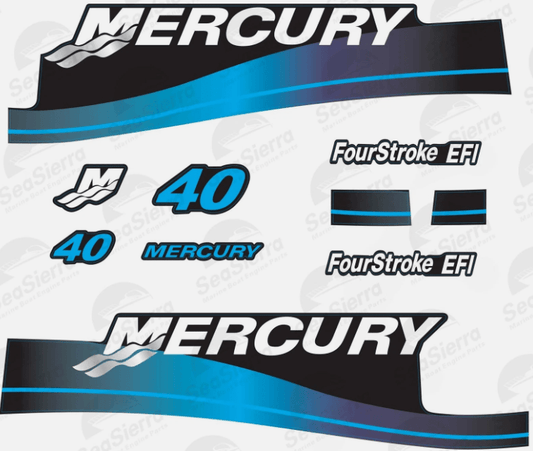

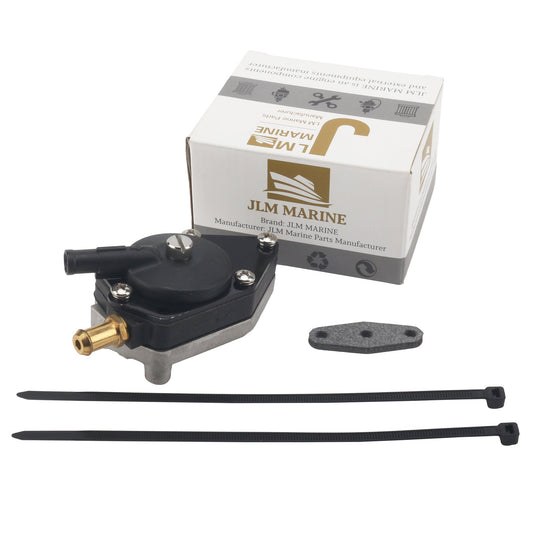
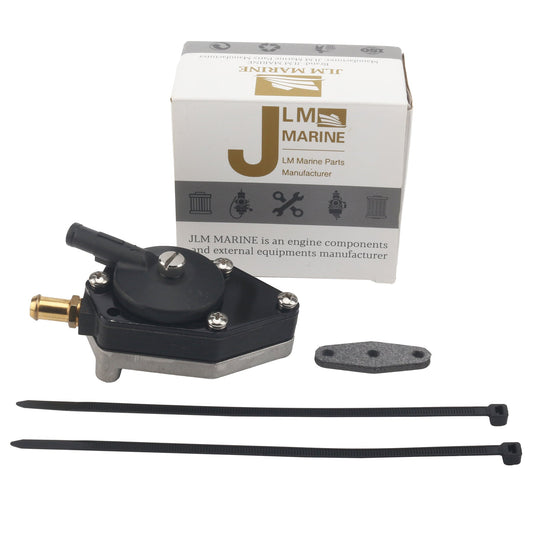
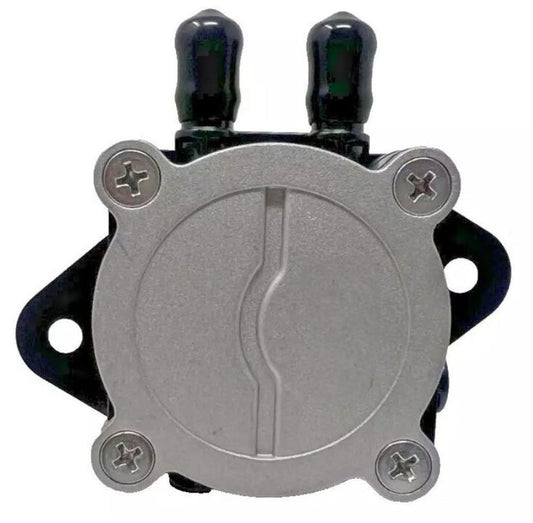
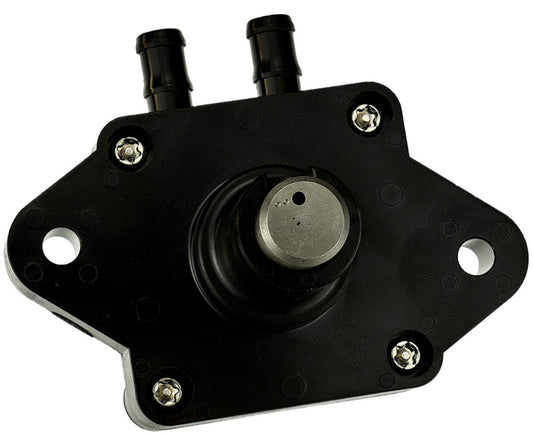
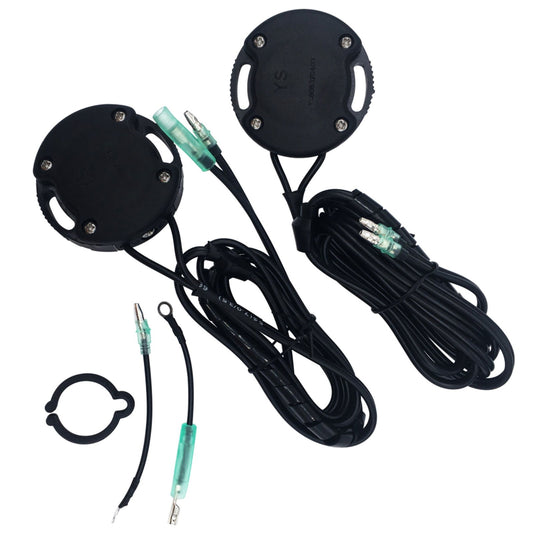
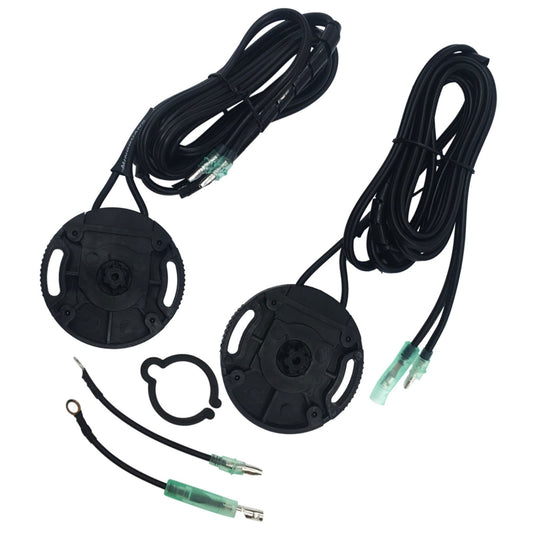
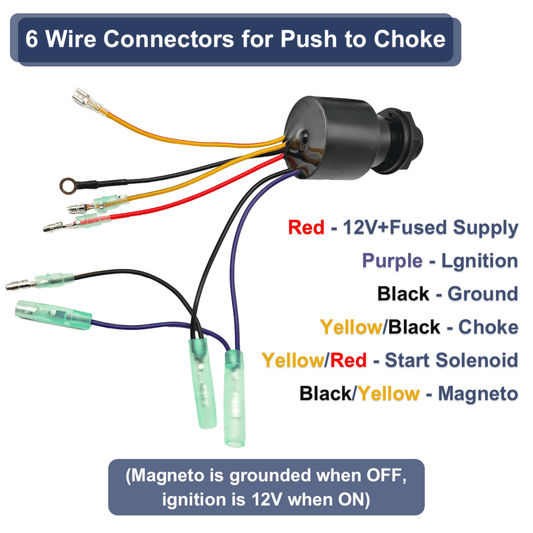
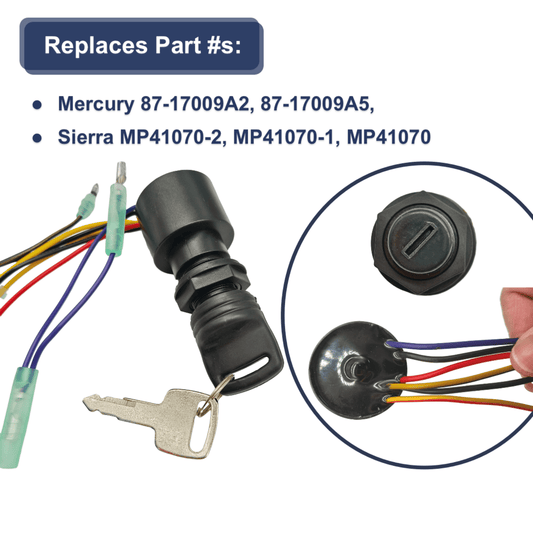
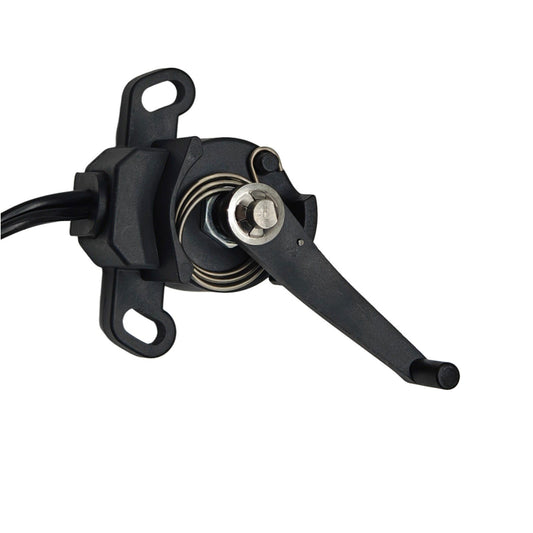
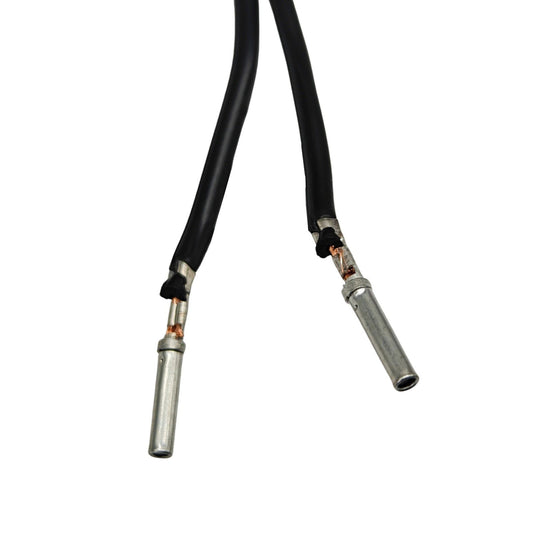
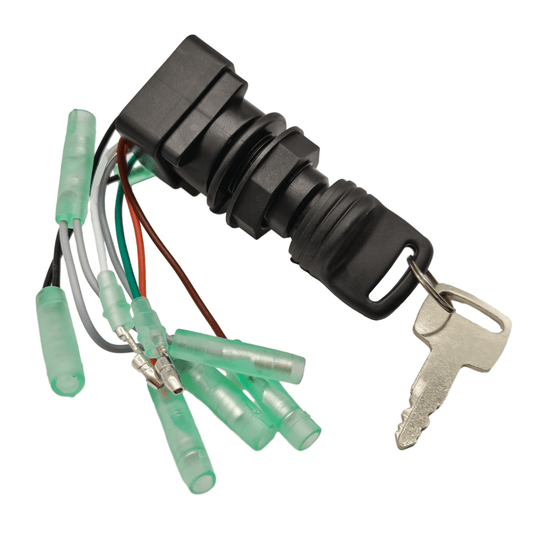
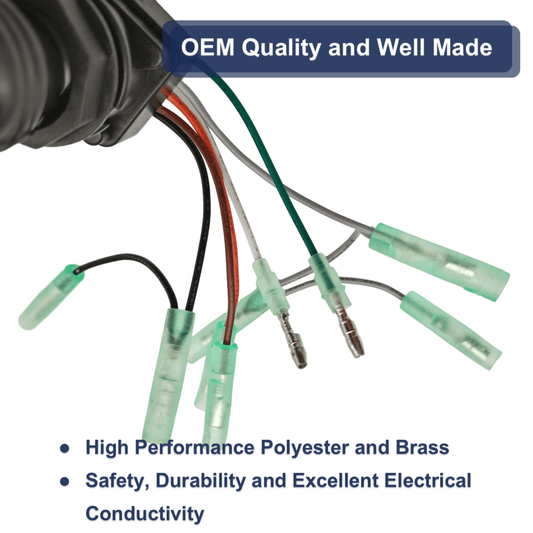

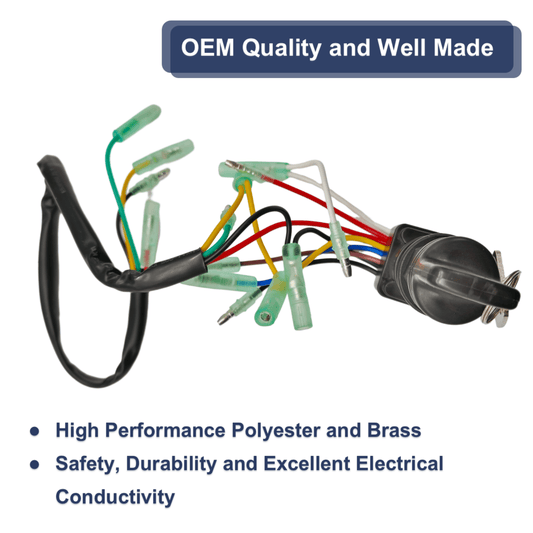
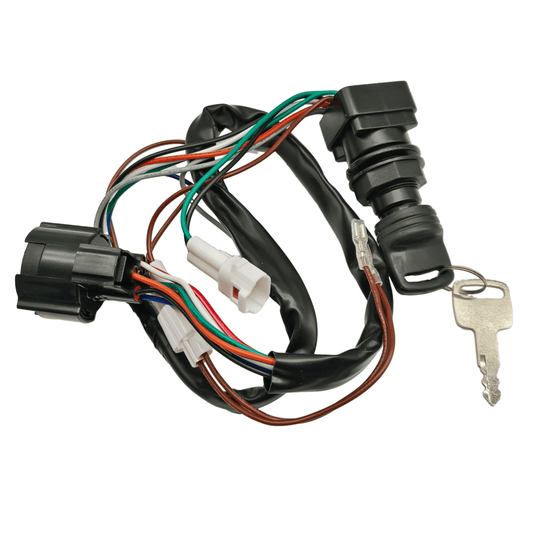
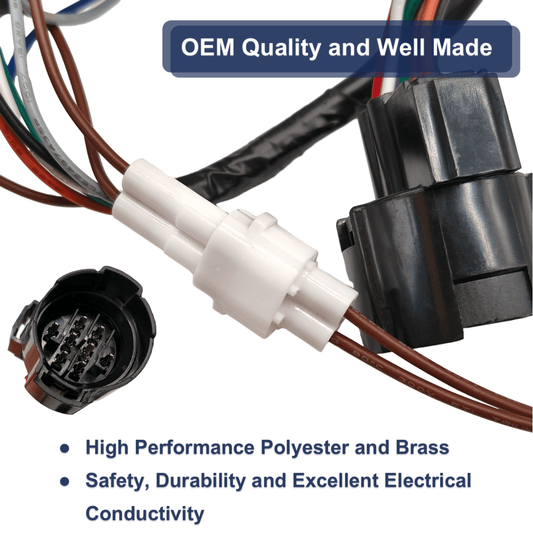

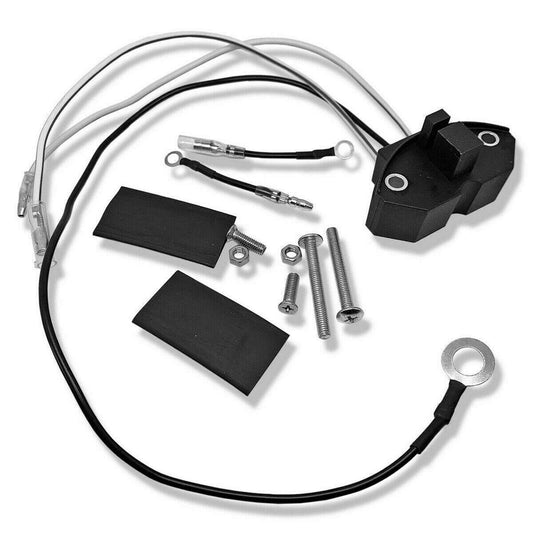

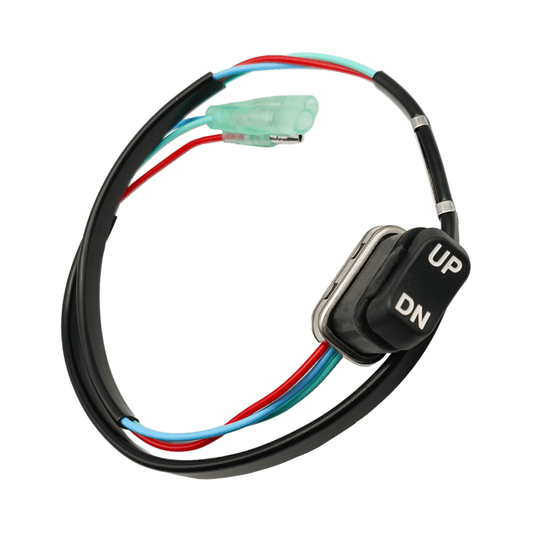
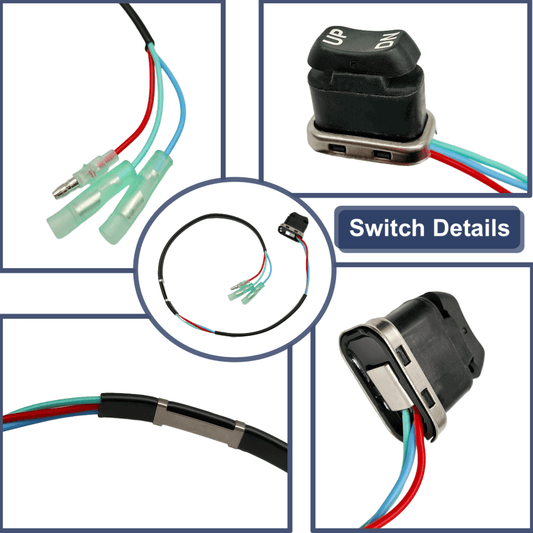
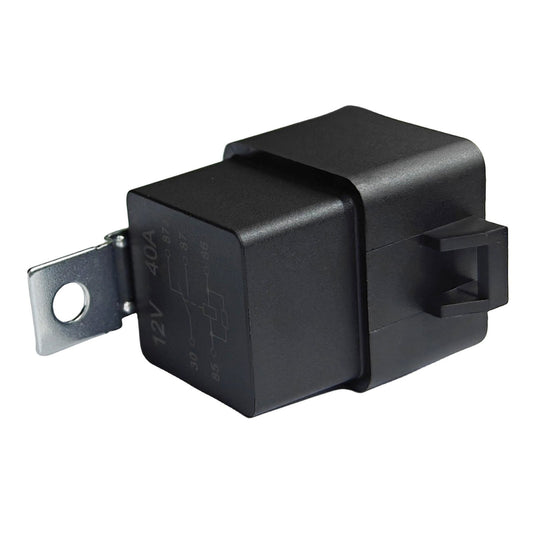
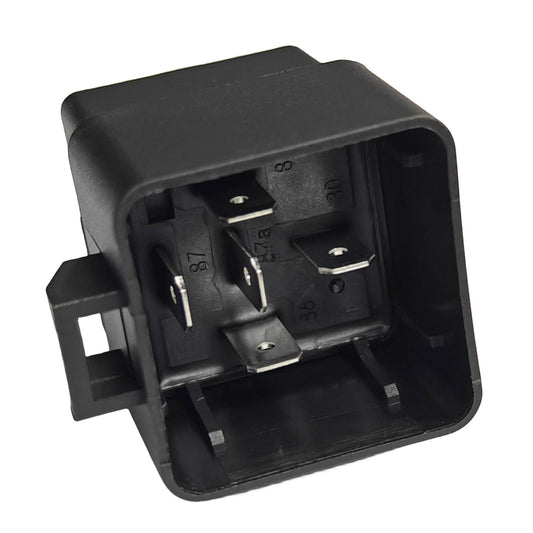










Leave a comment
Please note, comments need to be approved before they are published.